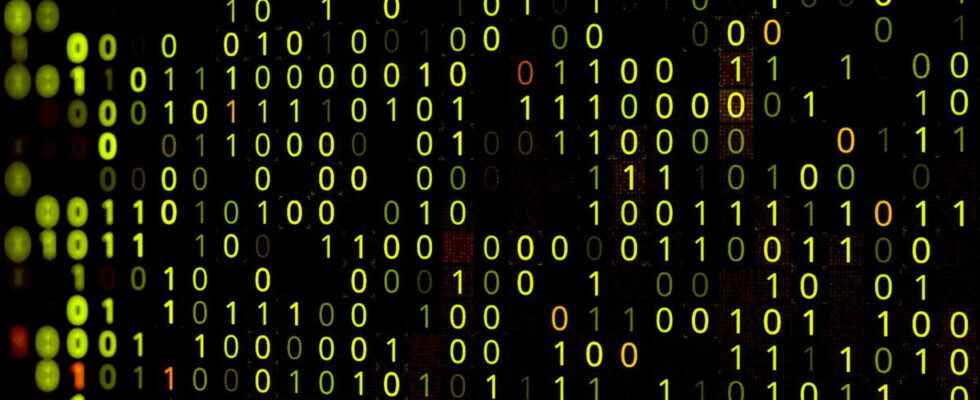On your PC, you have found files ending in .dat whose role you do not know? These are binary files that usually contain very sensitive data. You can open them, but under certain conditions.
While exploring your PC disk, USB keys or saved archives, you may have already come across mysterious files with the extension .dat or .data. But without knowing what they correspond to or what you should do with them. This is normal: these are very specific files, used by certain applications or by the system, and often hidden. You therefore do not have to open them and even less to modify them under penalty of causing more or less serious malfunctions. Unless you know exactly what you are doing, by following a tutorial, for example.
What is a DAT file?
A DAT file (say date), i.e. with the extension .dat after its name, is a data file (date being the diminutive of datawhich means data in English). In general, it is a binary file, created by a program and operated only by it. Which means it’s not meant to be opened or viewed directly. However, you can try to discover its contents out of curiosity or out of necessity, for example if you received it as an attachment to an e-mail. We’ll explain how later.
Many software programs create and use DAT files to store generally sensitive information, such as settings. This is also the case with Windows itself, which uses DAT files for all its settings. The .dat or .data extension being generic, there is no standard to define how to organize data there: each software does as it wants. If you look at the contents of a DAT file, you will see great differences in the presentation and type of information stored there.
There are DAT files of all sizes. Some weigh barely a few bytes, while others occupy several tens of megabytes. And the DAT or DATA format is not Windows apache; other operating systems like Android also use them, which is why you can see them when you open a USB key or memory card, for example. You can also find dozens of them on a Windows PC, by searching for *.dat or *.data via Explorer. You may be surprised by their number and variety. many are located in the main disk’s Windows, ProgrammData, or Users folder.
Concretely, if you do not know the precise vocation of a .dat file, we advise you not to delete it, move it, or even rename it, because Windows or one of your software will surely miss it. In general, avoid touching it!
Although consulting a .dat or .data file rarely tells you its purpose, if you want or need to open it, here are some tips.
- If the file received as an e-mail attachment is called Winmail.dattry this method to reveal its contents in Windows, Mac and smartphones.
- If the .dat file is attached to an e-mail and you cannot open it as explained above, it is surely a transmission problem: ask the sender to re-send its attachments.
- A DAT file can also contain a video. Some old camcorders thus recorded images and sound in a .dat file. In this case, try to open this file with a media player such as VLC.
- In all other cases, to find out the content of a .dat file, all you have to do is edit it with a very simple text editor such as Notepad or the small WordPad word processor, two applications supplied with Windows. Check the size of the file beforehand and only open it if its size does not exceed a few hundred kilobytes.
- Windows uses two particularly important .dat files: system.dat and user.dat. These are the registry files, where Windows stores all the system settings and your software. But you don’t need to know of their existence. To edit them, you actually use the program Registry Editor integrated into Windows: type the keyboard shortcut Win+R and enter Regedit.
